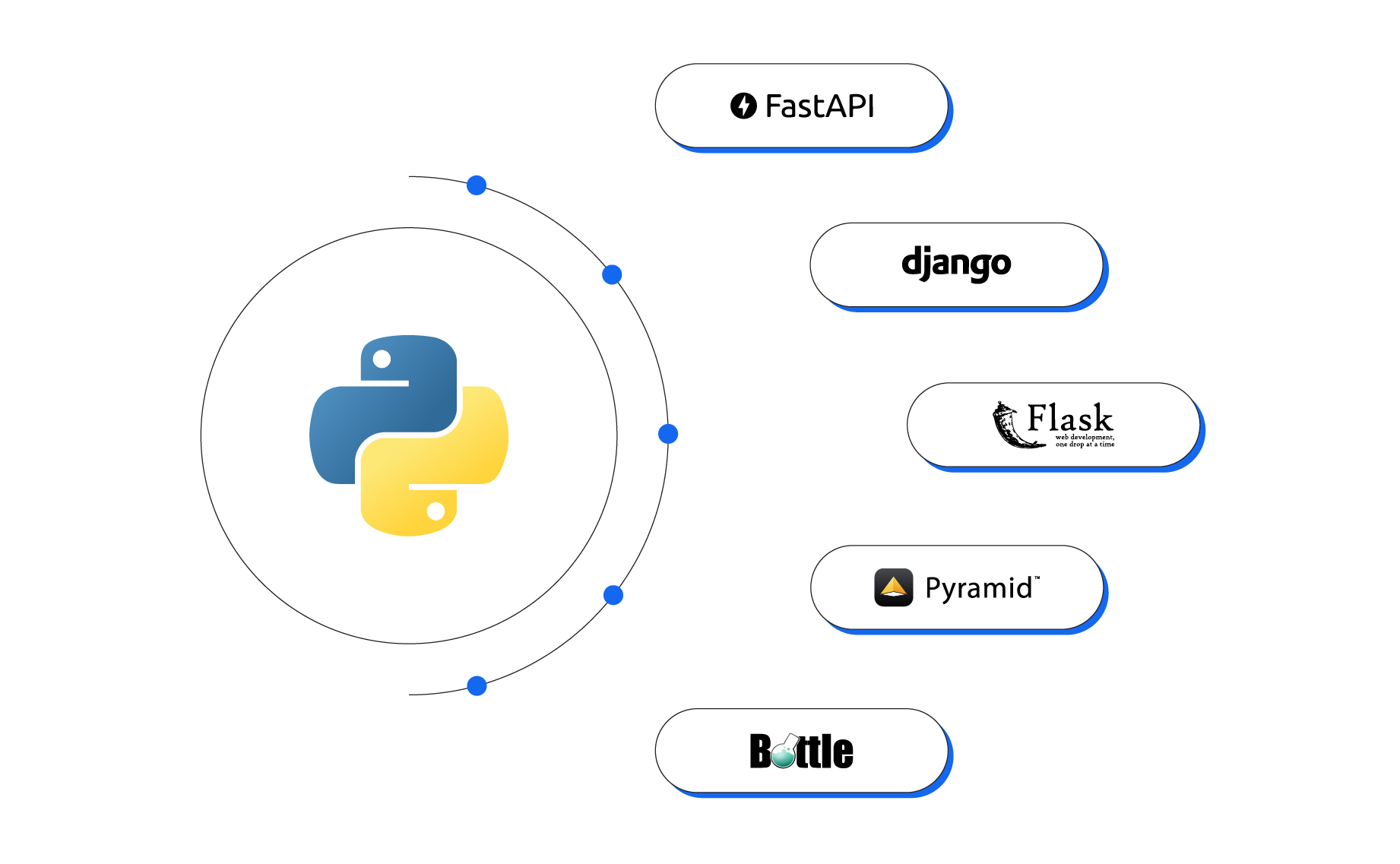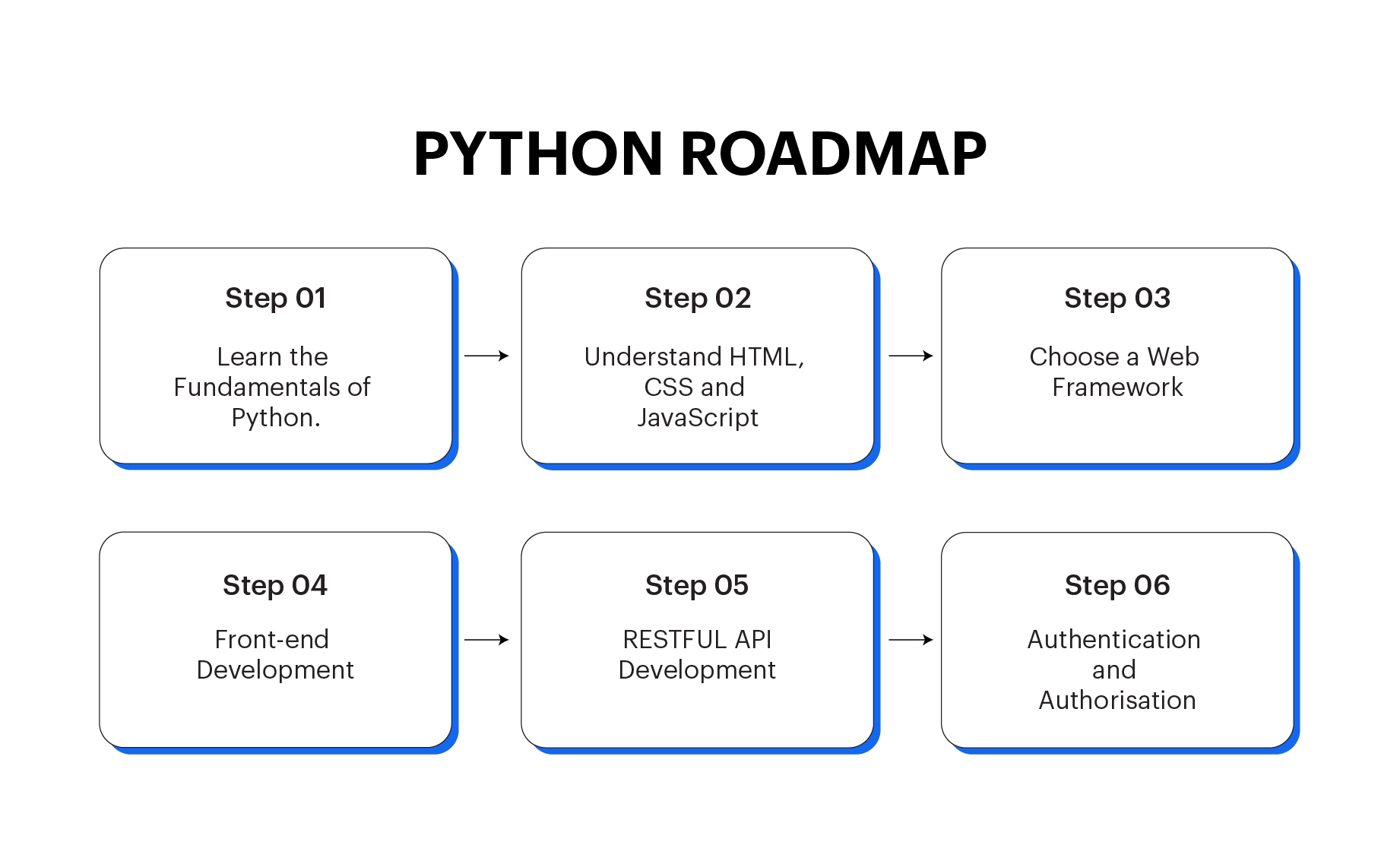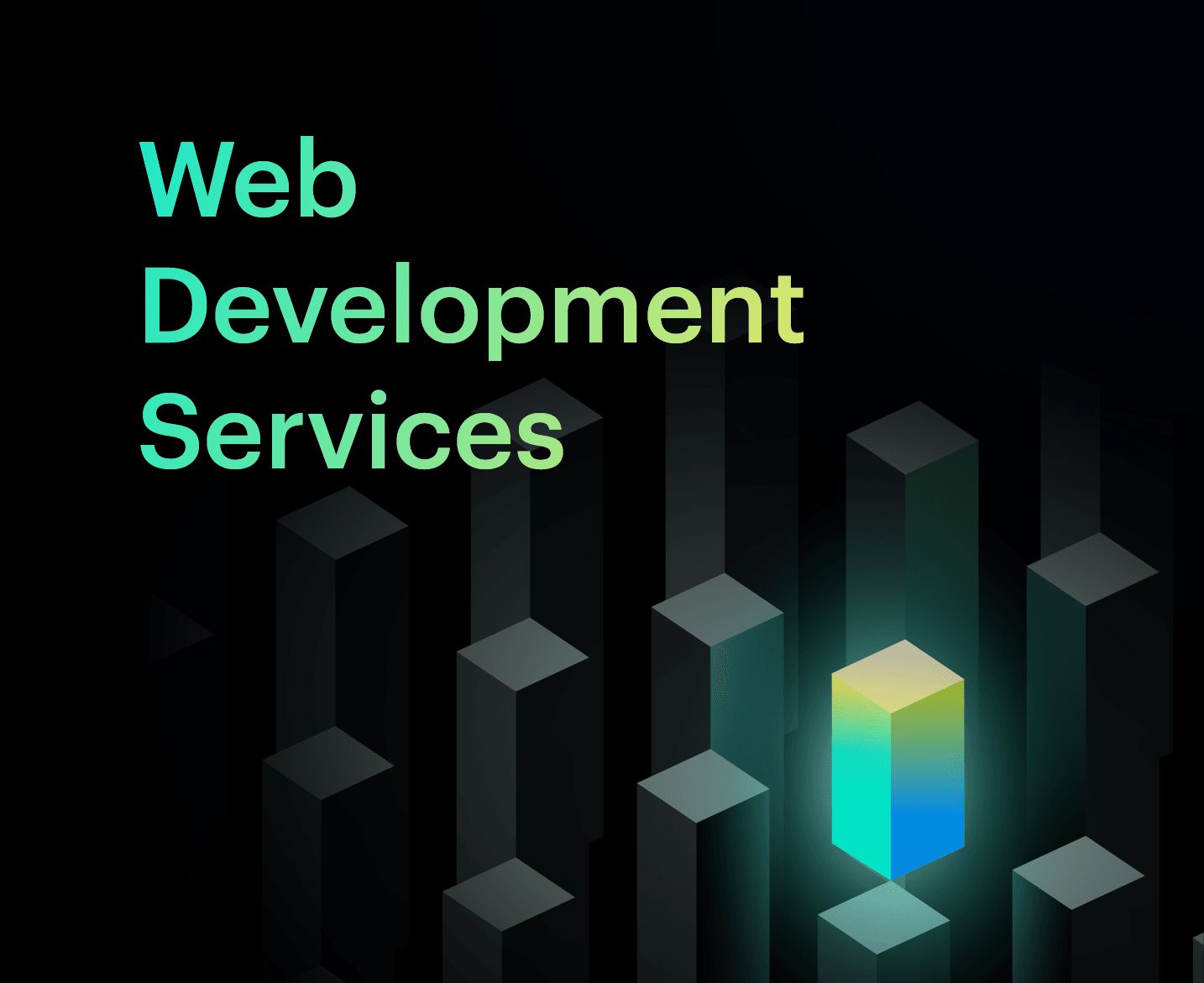Web Development with Python: An Ideal Choice for Scalable Web Applications

- Why Choose Python for Web Development?
- Popular Python Web Frameworks
- How to Do Web Development with Python?
- Learning Roadmap for Web Development with Python
- Python Libraries for Web Development
- How Much Does It Cost to Develop Web Applications with Python?
- Advantages of Using Python to Create Web Applications
- Final Note
- Why Choose Python for Web Development?
- Popular Python Web Frameworks
- How to Do Web Development with Python?
- Learning Roadmap for Web Development with Python
- Python Libraries for Web Development
- How Much Does It Cost to Develop Web Applications with Python?
- Advantages of Using Python to Create Web Applications
- Final Note
Python is a popular choice among developers to give life to dynamic web applications and websites. Web development with Python has gained prominence for its robust set of frameworks, tools and libraries that ease the development process, enabling developers to build scalable and streamlined web solutions.
Python Package Index has been loaded with 4,50,000+ packages, which proves that Python is a highly used and powerful programming language. With the enhancements brought in by Machine Learning and data analytics, many developers rely highly on Python due to its vast libraries, easy-to-learn syntax, and exceptional scalability.
In this article, let’s get into web development with Python in detail, its applications and its long list of advantages.
Why Choose Python for Web Development?
Python is a highly preferred programming language and the best option in web development. It offers many advantages, making it the finest choice for developing highly robust and scalable web applications. Let’s have a sneak peek at the reasons that justify the use of Python for web development:
- Readability & Simplicity: Due to an easy-to-read and write syntax, Python emphasizes the readability and maintainability of code. With a clean and intuitive syntax, it lets developers generate concepts in fewer lines of code. The simplicity of Python web development lets both beginners and expert developers work easily and collaborate seamlessly.
- Presence of an Active Community: Python incorporates a large community of developers who work together for growth and provide support. The community offers many libraries, frameworks and resources that are custom-tailored for web development. With a pool of community-specific tools and resources, Python is the right web development choice.
- Rich Library and Framework Ecosystem: Python provides a set of libraries and frameworks that make web development tasks the least complex. Django, one of the most known Python web frameworks, offers a full-fledged and robust set of tools that build sophisticated web applications. It adheres to a Model-View-Controller (MVC) architectural pattern and includes features such as authentication, URL routing and ORM (Object Relational Mapping) out of the box.
Another flexible and lightweight micro-framework that lets developers exercise more control over the structure and components is Flask. These Python web application frameworks and others, such as Pyramid and Bottle, offer a core foundation and improve productivity in web development. - Improved Scalability and Performance: Python is well-known for its enhanced performance and scalability, which makes it ideal for handling high-traffic web applications. Advancements such as asynchronous programming help Python frameworks like Django and Asyncio efficiently manage concurrent requests and expand server resources. Nevertheless, the integration capabilities of Python enable ease of integration with other languages, which lets developers utilise high-performance libraries written in languages such as C or C++ when required.
- Seamless Integration and Compatibility: Python integrates with other technologies easily, which makes it flexible for web development. It augments databases, such as SQL-based databases (MySQL, PostgreSQL, and SQLite) and NoSQL databases (MongoDB). Python offers compatibility with web servers, caching systems, message queues, and APIs, which lets developers efficiently integrate various components and services.
- Testing and Debugging Excellence: Python provides robust testing frameworks like unittest and pytest that simplify writing and executing tests for web applications. Debugging tools such as Integrated Development Environments (IDEs) offer great debugging capabilities, like helping developers detect and fix issues quickly.
- Rapid Development of Web Applications: The focus of Python on simplicity and productivity lets developers build web applications swiftly. Using pre-built modules and libraries helps developers leverage the present solutions without reinventing the process. This rapid development is advantageous to small-scale businesses and startups, prioritising time-to-market.
Popular Python Web Frameworks

1. Django
Django is one of the most prominent open-source Python web frameworks that facilitates ease of web design and development, making it extraordinarily adaptable. The use of the tool is advisable due to the following benefits:
- Can work with startups and large organisations;
- Web application developers can move quickly from concept to launch;
- The user authentication mechanism offers a secure approach to safeguarding user’s passwords and accounts;
- Extensive documentation of use and a huge user community;
- Web template engines, authentication and account authorisation are built to suit Django’s functionality.
Many tech companies use Django in the backend to build powerful web applications. Some of the examples include Instagram, Spotify, YouTube, DropBox, and Pinterest.
2. FastAPI
FastAPI is a web application framework in Python with tools that let developers leverage a REST interface to call common functions to deploy applications. It is accessed using a REST API to call common building blocks for a specific application. For instance, the author uses FastAPI for account creation, login and authentication.
- It integrates the capabilities of async/await functionality.
- The modularity and simplicity of FastAPI facilitate seamless integration with load balancers, foster scalability, and ensure optimal resource utilisation.
- Being a Python framework, FastAPI has inherited the benefits of using it. Also, FastAPI makes building servers and endpoints quicker and easier.
- It offers request validation with a more detailed error message that is readable for the users.
3. Flask
Flask is a Python web framework and the best choice for building intricate web applications. It makes recommendations but doesn’t impose any dependencies or a typical project structure. Since it is simple to use, Flask lets you add any libraries or extensions you wish as you code, rather than estimating the requirements before you start to code. It offers freedom and flexibility through the right components to develop web-based applications. Some of the features include:
- Flask is highly adaptable and enables developers to create a multitude of solutions.
- It tries to manage a usual yet quickly expandable core.
- It includes many parameters that let you modify the website’s behaviour.
4. Pyramid
With Pyramid, you can begin small and scale, if required. Pyramid can be used with different databases and applications or extended with plugins. Python developers can incorporate whichever functionality they need. This is ideal when you have to execute various solutions within a single task.
- It is a popular Python web framework.
- It supports both small and large projects.
- You can get support for single-file web apps such as microframeworks.
- It involves built-in sessions
- It also supports events similar to those like Pylon/Zope.
5. Bottle
Bottle incorporates a microframework called Web Server Gateway Interface (WSGI), specifically built for swift, lightweight and robust Python web applications. The default Python library is the major dependency of the framework and the significant features of Bottle are:
- Applicable for Python versions 2.7 and above.
- It supports templates like Mako, Cheetah, and Jinja2 and encompasses a quick built-in template engine.
- Form data, headers, file uploads, cookies and related HTTP-based information become easily accessible using the framework.
- It has an in-built HTTP development server that supports any WSGI-capable HTTP server, such as Bjoern, fapws3, etc.
How to Do Web Development with Python?
Web development in Python is more straightforward and works exceptionally well compared to other object-oriented programming languages. Web development on Python involves developing and managing websites. It includes building a single static site of simple text or could be developing complex web applications, social media, online storefronts, etc.
Web developers can pick their choices for front-end, back-end or full-stack specialisations. While the front end deals with client interactions, the back end focuses on tech infrastructure and communities using a database and full-stack platforms. As Python frameworks are conducive, most Python developers use a combination of Python and Javascript to construct web projects. You can adopt the following process to build a website with Python.
1. HTML and CSS
Learning HTML and CSS helps you design and implement websites. Before using complex web development with Python for more substantial websites, it’s important to know how to organise the reactive static sites. A complete understanding of DNS, hosting, HTTPS and browser setups is necessary.
2. JavaScript
Ensure you are familiar with JavaScript, and understand data types, conventions, variables, control instructions and loops. While implementing JavaScript into the client-side code, follow the fundamentals of the language.
3. DOM and jQuery
It lets programmers add, modify or remove components from the HTML files. Working with JavaScript libraries like jQuery and DOM makes DOM manipulation easy when you have a detailed understanding of the JavaScript fundamentals. You could also use this to learn how to build dynamic websites.
4. Web Frameworks
A web framework is a set of standardised packages and modules that streamline the creation of online applications. It accelerates and facilitates development while improving the scalability and dependability of the products. Use the web application framework of Python to build complex applications much faster.
Learning Roadmap for Web Development with Python

- Learn the fundamentals of Python: Familiarise yourself with the basics of Python programming for web development, which include data types, syntax, control structures and functions. You can refer to the books or online tutorials to get started.
- Understand HTML, CSS and JavaScript: Know the basics of web technologies such as HTML for markup, CSS to enable styling and JavaScript to ensure client-side interactivity. These are vital for understanding and building web pages.
- Choose a web framework: Choose a Python web framework that aligns with your project's requirements. Every framework has its own features and learning curve, hence, browse their resources and documentation to make informed choices.
- Front-end development: Improve your web development skills by practicing well-known front-end libraries and frameworks like Vue.js, React, Angular, etc. These let you build interactive user interfaces and enable communication with backend APIs.
- RESTful API development: If API development is a part of the project, understand RESTful principles and design patterns. Leverage your chosen web application framework of Python to build APIs that present functionality and data to other front-end interfaces or applications.
- Authentication and authorisation: Define the concepts of user authentication and authorisation. Understand how to implement secure user registration, access control mechanisms and logins with built-in features or extensions for your web framework.
Python Libraries for Web Development
Celery is a distributed task library that facilitates asynchronous task execution for web applications. It maintains the process of offloading time-consuming and resource-intensive tasks in the background, thereby improving the application’s responsiveness.
SQLAlchemy is a feature-packed ORM (Object Relational Mapping) library that streamlines Python data management. It augments the multiple database engines and offers a high-level API to enable database interaction, making working with databases in web applications smoother.
Jinja2 is a flexible template engine that uses Python. It offers a syntax to define templates that include placeholders and logic and can be dynamically rendered using data. It is used widely in frameworks such as Django and Flask to create dynamic content, HTML pages, or emails.
Pydantic is a data validation library that makes working with complex Python data structures easier. It lets you define data models using type hints and ensures automatic data validation, serialisation and deserialisation. It is highly used in web applications to validate and handle incoming requests.
Pillow is a powerful library that implements image processing and manipulation. It offers functionalities for cropping, resizing, implementing filters and including texts or overlays on the images. Pillow is frequently used in web applications to execute image handling and manipulation.
Pandas is an open-source library specifically built for data manipulation and analysis. It offers data structure and operations to facilitate powerful, flexible and in-depth analysis and manipulation. Pandas supports Python with the capability to work with spreadsheet-like information that helps with alignment, fast loading, manipulation and merging along with the other core functions.
Psycopg works based on the principle of the Python DB API 2.0 implementation combined with thread safety (multiple threads share the same connection). It is designed to manage heavily multi-threaded applications that make and break many cursors and build a huge number of INSERTS or UPDATES. Psycopg 2 is Python-3 friendly and Unicode.
How Much Does It Cost to Develop Web Applications with Python?
Many cost-driving factors help you arrive at the total cost estimate for a Python-based web application. These factors include design, development, maintenance, hosting and features. It is significant to mention the type of application you need to build, as this affects later development and design decisions.
- The scope of the web application is a crucial aspect that analyses the complexity and relevance of the project and helps you decide the cost of web development in Python.
- You also need additional functionalities in the web applications, like payment gateway integration and other third-party plugins.
- It is also important to mention how many developers you will need for the project. Hence, it is easier to build a team of developers with adequate experience.
- It is essential to mention the project duration alongside other factors, as it helps a Python developer provide you with an estimate.
- Code quality is a primary aspect that impacts the cost of web development in Python. It is important to keep up the code standards, making it easier to modify the features and more readable for the new developers as you expand the team.
Advantages of Using Python to Create Web Applications
Considering the ease of use, Python is a language that coders and programmers use widely across different domains. Some advantages of using Python for web development are listed below:
- It employs much more white space and expressions than Java and C++, which reduces the amount of code to write. Since the code resembles everyday speech, you don't need to worry about usability barriers.
- You get an extensive array of tools and library packages that help programmers utilise significant predefined codes and minimise the time it takes to build applications.
- It has a faster development time than other programming languages and helps you create ideas much faster to get revisions faster. Business owners can benefit from Python to market their products rapidly and stay ahead of the competition.
- Both beginners and experts use it extensively all over the world. With a powerful foundation and a lot of assistance, it helps beginner developers who are beginning a career in web development.
Final Note
Python is a complete programming language ideal for web development using exceptional web technology frameworks, Python libraries and a pre-written set of codes. These frameworks let you create complex web applications. You need to consider the web application you wish to create and the features you wish to incorporate into it. The estimation of cost depends on the features you wish to accommodate in your web application and the details you need to add to them.
If you want professional assistance from a web development services company, WAC can help you with everything from custom designs to web development, scalability and security. Being a top-tier Python web development company with a strong expertise of over 11+ years, we offer the best web development services and consulting services for your project. To learn more about how we can help you in the journey of Python web development, reach out to us. WAC also provides the option to hire Python developers or hire Django developers who can deliver high-quality, scalable, and secure solutions for your project.

Custom Web Development Services
Creating solid digital presence and enhancing brand value through web-based products
Discover Digital Transformation
Please feel free to share your thoughts and we can discuss it over a cup of tea.










